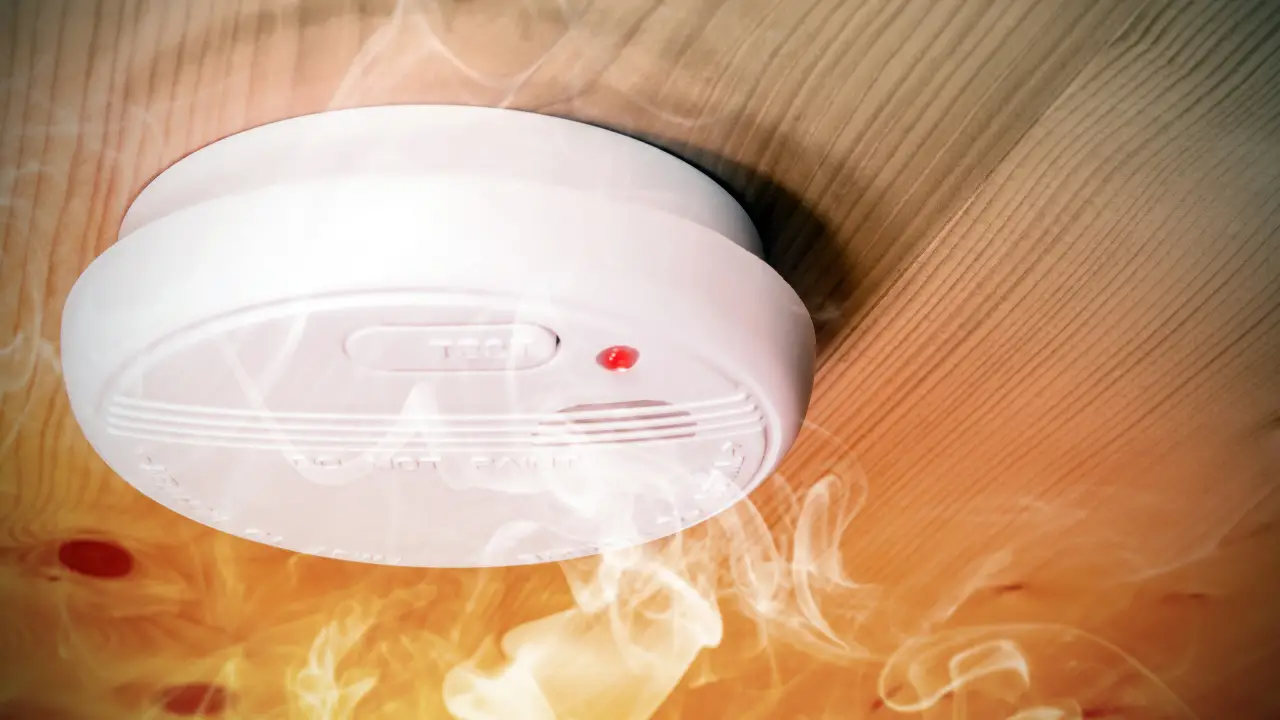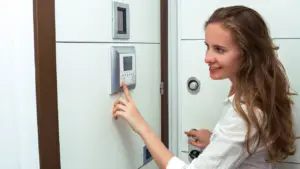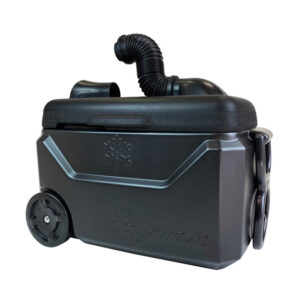Are you tired of the constant beeping from your smoke detector? Follow these simple steps to stop the beeping and restore peace in your home.
Table of Contents
Key Takeaways on How to stop a smoke detector from beeping
- Identify the reason behind the beeping
- Check and replace the battery if necessary
- Properly install the battery to prevent beeping
- Clean the smoke detector’s sensing chamber to remove dust and dirt
- Address temperature fluctuations or environmental factors that may trigger the detector
Identify the reason for the beeping
The first step in stopping the beeping is to identify why your smoke detector is sounding the alarm. There are several possible causes for this, so let’s troubleshoot the issue together.
One common reason for the beeping is a low battery. Smoke detectors are designed to alert you when the battery is running low and needs to be replaced. To fix this, simply replace the battery with a new one. Make sure to check the battery compartment to ensure that the battery is installed properly and the drawer is closed completely.
Remember, a smoke detector with a low battery can’t do its job effectively, so it’s important to address this issue promptly.
If the battery is not the problem, the next step is to check the sensing chamber. Dust or dirt buildup in the chamber can cause false alarms and result in the beeping. To clean the chamber, gently remove the smoke detector from its mounting bracket and use a can of compressed air or a soft brush to remove any debris. Then, reattach the smoke detector and check if the beeping has stopped.
It’s also important to consider temperature fluctuations and environmental factors that may be triggering the smoke detector. Extreme temperature changes, such as steam from a hot shower or cooking fumes, can set off the alarm. To prevent this, make sure to ventilate your kitchen properly and avoid placing the smoke detector near the bathroom or kitchen.
If none of these troubleshooting steps resolve the issue, it may be time to replace your smoke detector. Smoke detectors generally have a lifespan of around 8-10 years, so if yours is older than that, it’s a good idea to invest in a new one for your safety.
| Common causes of smoke detector beeping: |
|---|
| Low battery |
| Dust or dirt in sensing chamber |
| Temperature fluctuations |
| Environmental factors (steam, cooking fumes) |
| Expired or old smoke detector |
Check the battery
One of the simplest solutions to stop the beeping is to check the battery level of your smoke detector. A low battery is often the culprit behind the constant beeping. To check the battery, follow these steps:
- Locate the smoke detector in your home.
- Remove the detector from its mounting bracket or twist it counterclockwise to unlock it, depending on the model.
- Check the battery compartment for any signs of corrosion or damage. If you notice any, replace the detector immediately.
- Remove the old battery and replace it with a fresh one of the same type and voltage.
- Make sure the battery is securely in place and the battery drawer is closed completely.
After replacing the battery, reattach the smoke detector to its mounting bracket or twist it clockwise to lock it back in place. This should resolve the beeping issue if the low battery was the cause.
Properly install the battery
It’s important to note that even with a new battery, improper installation can cause the smoke detector to continue beeping. To ensure the battery is properly installed, follow these guidelines:
- Check the battery polarity markings on the smoke detector and the battery itself. The positive (+) and negative (-) signs should align correctly.
- Insert the battery into the compartment, making sure it fits snugly.
- Close the battery drawer securely to create a tight connection.
By following these steps and properly installing the battery, you can eliminate any potential issues that may cause the smoke detector to beep unnecessarily.
| Problem | Solution |
|---|---|
| Low battery | Replace the battery with a new one of the same type and voltage. |
| Improper installation | Ensure the battery is correctly aligned and securely inserted into the compartment. |
Remember, regularly checking and replacing the batteries in your smoke detectors is essential to ensure they are functioning properly. It is recommended to test your smoke detectors monthly and replace the batteries at least once a year to maintain optimal safety in your home.
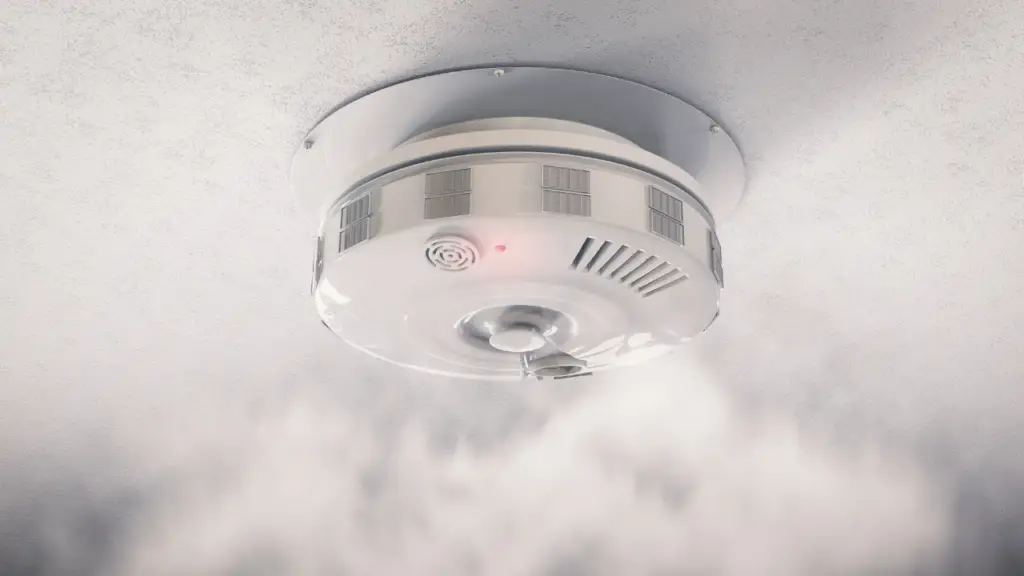
Properly install the battery
Simply replacing the battery may not be enough; it’s essential to ensure it is installed correctly to stop the beeping. Follow these steps to properly install the battery in your smoke detector:
- Turn off the power to the smoke detector by switching off the circuit breaker or removing the battery if it is easily accessible.
- Open the battery drawer or compartment on the smoke detector. Consult the user manual if you’re unsure how to access the battery.
- Remove the old battery from the compartment. Check for any corrosion on the battery terminals and clean them if necessary.
- Insert the new battery into the compartment, making sure to match the positive (+) and negative (-) signs on the battery with the corresponding marks in the compartment.
- Close the battery drawer or compartment securely to ensure proper contact between the battery and the smoke detector.
Once the battery is properly installed, restore the power to the smoke detector and test it by pressing the test button. If the beeping persists, double-check the battery installation and try again. If the problem continues, move on to the next troubleshooting steps.
Table: Battery Installation Tips
| Tip | Description |
|---|---|
| Check the battery type | Make sure you are using the correct type of battery recommended for your smoke detector. Refer to the user manual or the label on the detector for the specific battery requirements. |
| Replace batteries regularly | It is recommended to replace the batteries in your smoke detectors at least once a year, or when the low battery warning starts beeping. |
| Avoid mixing old and new batteries | When replacing the battery, use a fresh battery rather than mixing it with an old one. Mixing different battery types or brands can impact the performance of the detector. |
| Dispose of old batteries properly | Follow local regulations for the proper disposal of used batteries. Many communities have designated recycling centers or programs for battery disposal. |
By following these steps and ensuring proper battery installation, you can effectively stop the beeping of your smoke detector caused by battery-related issues. However, if the beeping persists, there may be other underlying causes that require further investigation.
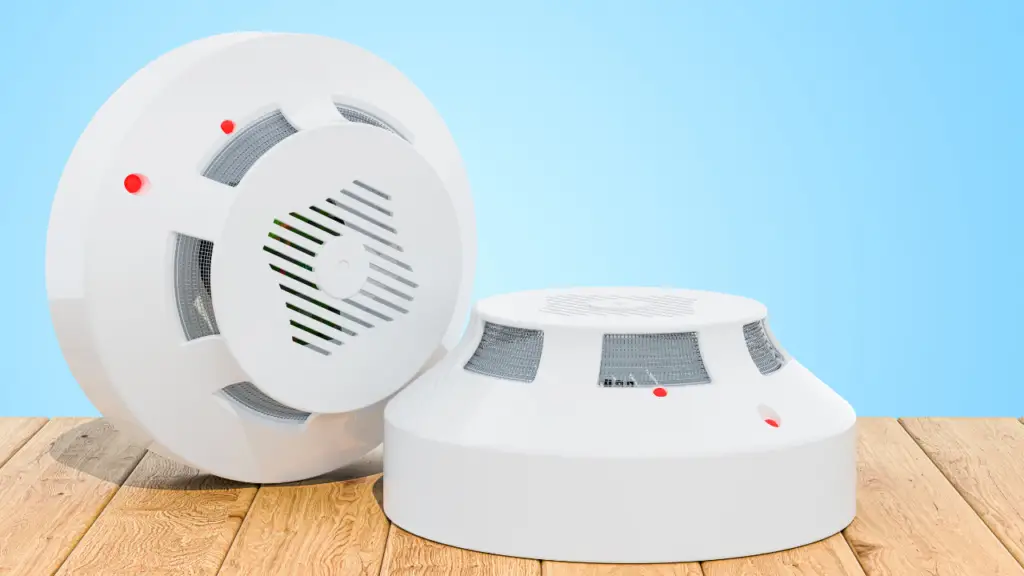
Clean the sensing chamber
Dust and debris can interfere with the smoke detector’s sensor, causing it to beep unnecessarily. To resolve this issue, follow these steps to clean the sensing chamber:
- First, make sure the smoke detector is disconnected from the power source. This is important for your safety.
- Next, remove the smoke detector from its mounting bracket. Some detectors twist or slide off, while others have a locking mechanism that needs to be released.
- Once the detector is in your hands, carefully open the cover to expose the sensing chamber.
- Use a soft, clean brush or a can of compressed air to gently remove any dust or debris from the chamber. Be thorough but gentle, as you don’t want to damage the sensor or other components.
- After cleaning, close the cover and reattach the smoke detector to its mounting bracket.
- Finally, reconnect the power source and test the detector to ensure it is functioning properly.
Cleaning the sensing chamber should help eliminate false alarms and stop the smoke detector from beeping. However, if the issue persists, there may be another underlying problem that requires further troubleshooting or professional assistance.
| Problem | Solution |
|---|---|
| Smoke detector still beeping after cleaning the sensing chamber | Check for other environmental factors, such as steam or cooking fumes, that may be triggering the detector. Minimize these factors to prevent unnecessary beeping. |
| Beeping continues despite addressing environmental factors | Replace the smoke detector with a new one. Smoke detectors generally have a lifespan of 8-10 years and may need to be replaced if they are older than that. |
Remember, regular maintenance and testing of your smoke detectors is essential to ensure they are in good working condition. This will help provide early warning in case of a fire and keep your home safe.
Check for temperature fluctuations
Temperature changes in your surroundings may be the reason behind the continuous beeping of your smoke detector. Smoke detectors are designed to detect smoke particles in the air, but they can also be triggered by sudden changes in temperature. If the temperature in your home fluctuates frequently, such as when cooking or showering, it can cause the smoke detector to beep unnecessarily.
To address this issue, start by identifying areas in your home where temperature fluctuations are common. These could be areas near windows, doors, or vents. Once you have identified these areas, you can take steps to minimize the temperature changes. For example, you can insulate windows and doors to prevent heat loss or gain, or you can install exhaust fans in bathrooms to remove steam quickly.
In addition to addressing specific areas, it’s also important to maintain a consistent temperature in your home. Avoid drastic changes in temperature by using heating and cooling systems effectively. Keep blinds or curtains closed during hot days to prevent direct sunlight from heating up your home. By maintaining a stable and comfortable temperature, you can reduce the chances of your smoke detector beeping unnecessarily.
| Steps to check for temperature fluctuations: |
|---|
| 1. Identify areas in your home where temperature fluctuations are common. |
| 2. Take steps to minimize temperature changes, such as insulating windows and doors or using exhaust fans. |
| 3. Maintain a consistent temperature in your home by using heating and cooling systems effectively. |
| 4. Keep blinds or curtains closed during hot days to prevent direct sunlight from heating up your home. |
Summary:
Temperature fluctuations can cause your smoke detector to beep continuously. By identifying areas of your home where temperature changes frequently occur and taking the necessary steps to minimize these changes, you can prevent unnecessary beeping. Maintaining a consistent temperature in your home and using heating and cooling systems effectively will also help reduce the chances of your smoke detector being triggered. By addressing temperature fluctuations, you can ensure that your smoke detector functions properly and provides accurate fire detection.
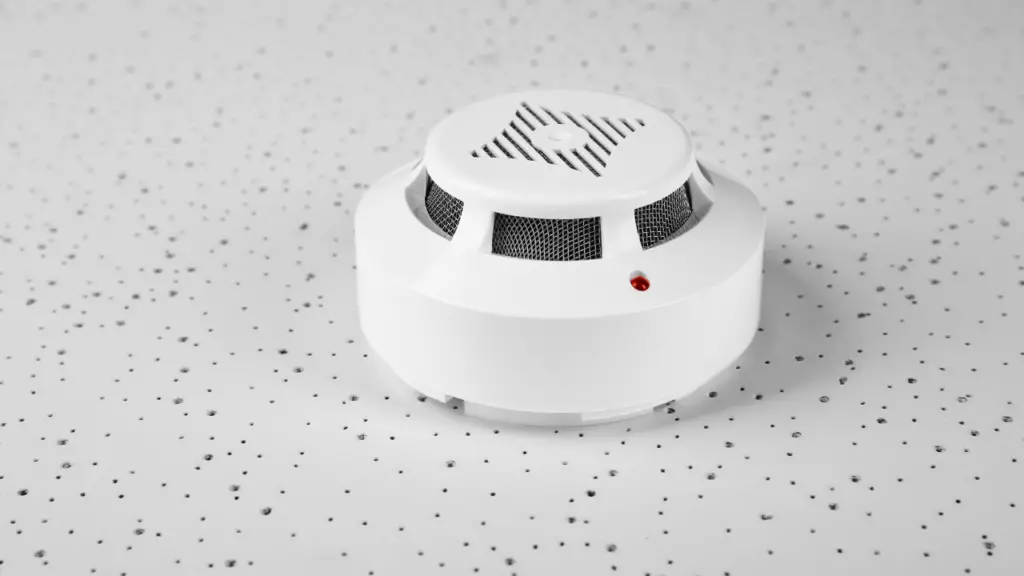
Consider Environmental Factors
Environmental factors can sometimes trigger false alarms in your smoke detector, leading to constant beeping. It’s important to be aware of these factors and take steps to minimize their impact. Here are some common environmental factors that can set off a smoke detector:
- Steam: Steam from a hot shower or cooking can cause moisture to enter the smoke detector, leading to false alarms. To prevent this, ensure that your bathroom and kitchen are well-ventilated and use exhaust fans to reduce steam.
- Cooking fumes: Strong cooking odors can also trigger a smoke detector. If you’re cooking with a lot of oil or using high heat, it’s a good idea to open windows and use fans to ventilate the area.
- Dust and insects: Dust buildup or the presence of insects can interfere with the functioning of a smoke detector. Regularly clean the detector with a soft brush or vacuum cleaner to remove any dust or debris. Additionally, make sure there are no insects nesting inside the detector.
Minimizing Environmental Factors
To minimize the impact of these environmental factors, consider the following tips:
- Keep smoke detectors away from bathrooms and kitchens, as these areas are more likely to produce steam and cooking fumes.
- Ensure proper ventilation in your home by opening windows, using exhaust fans, or using air purifiers to filter out impurities.
- Regularly clean and maintain your smoke detectors to prevent dust buildup and insect infestation.
- In case of excessive false alarms, consider relocating the smoke detector to a more suitable location.
By being mindful of these environmental factors and taking appropriate measures, you can reduce the occurrence of false alarms and prevent your smoke detector from constantly beeping.
| Environmental Factors | Solutions |
|---|---|
| Steam | Ensure proper ventilation, use exhaust fans |
| Cooking fumes | Ventilate the area, open windows, use fans |
| Dust and insects | Clean regularly, remove dust and debris |
Replace the smoke detector
If none of the previous steps have resolved the beeping issue, it might be necessary to replace your smoke detector. Smoke detectors generally have a lifespan of around 8-10 years, after which they may become less reliable in detecting smoke and emitting accurate warnings. Additionally, if your smoke detector is older, it may not meet the current safety standards and regulations.
When replacing your smoke detector, it’s important to choose a model that meets the latest industry standards and provides the necessary level of protection for your home. Look for smoke detectors that have the Underwriters Laboratories (UL) certification, which ensures compliance with safety standards.
Before installing the new smoke detector, make sure to read the manufacturer’s instructions and follow their guidelines. This will ensure proper installation and optimal functionality. Remember to test your new smoke detector after installation to confirm that it is working correctly and detecting smoke effectively.
| Steps to Replace the Smoke Detector |
|---|
| 1. Turn off the power: Before removing the old smoke detector, turn off the power to the circuit it is connected to. This will prevent any electrical accidents during the replacement process. |
| 2. Remove the old detector: Carefully detach the old smoke detector from its mounting plate by twisting it counterclockwise or removing the screws that hold it in place. |
| 3. Disconnect the wiring: If your smoke detector is hardwired, you’ll need to disconnect the wiring. Follow the manufacturer’s instructions to ensure you disconnect the wires correctly. |
| 4. Mount the new detector: Attach the new smoke detector to the mounting plate by twisting it clockwise or securing it with screws. Ensure it is securely fastened. |
| 5. Connect the wiring: If your new smoke detector is hardwired, connect the wiring by following the manufacturer’s instructions. Double-check that the wiring is correct to avoid any issues. |
| 6. Turn on the power: Once the new smoke detector is properly installed and the wiring is connected, turn on the power to the circuit. |
| 7. Test the new detector: Press the test button on the smoke detector to ensure it is functioning correctly. If the alarm sounds, it means the new smoke detector is working and ready to protect your home. |
By following these steps and replacing your smoke detector as needed, you can ensure the continued safety and peace of mind for you and your family.
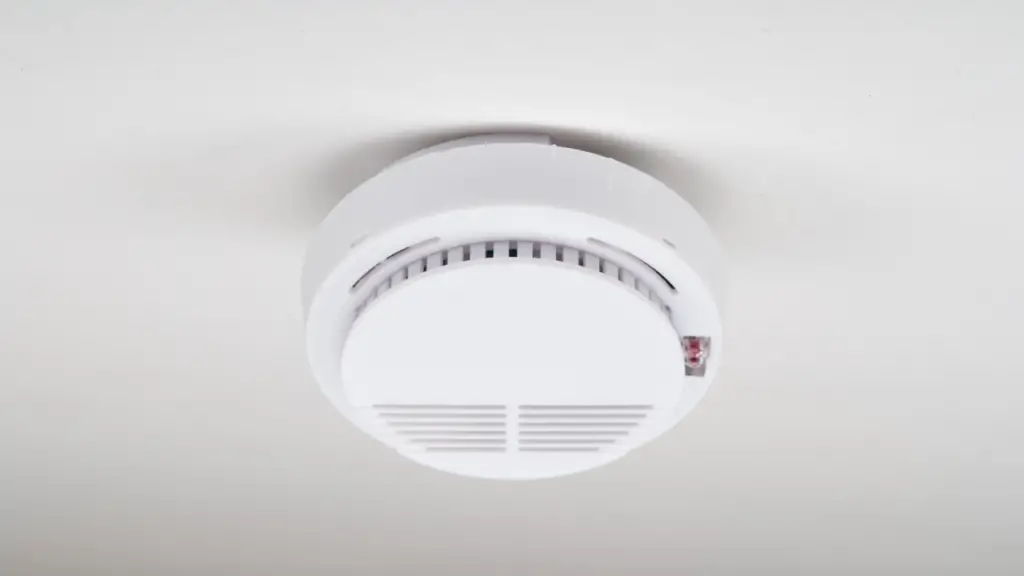
Regular Maintenance and Testing
To prevent future beeping and ensure your smoke detector is always ready, regular maintenance and testing are essential. By following these steps, you can keep your smoke alarm in optimal working condition:
- Check the battery: It’s important to regularly check the battery of your smoke detector. Replace the battery at least once a year or as recommended by the manufacturer. A low battery is a common cause of beeping, so keeping it fresh is crucial.
- Clean the sensing chamber: Dust and dirt can accumulate inside the smoke detector’s sensing chamber, causing false alarms. Gently vacuum or use compressed air to remove any debris. Ensure that the vents are clear and unobstructed to allow proper airflow.
- Test regularly: Press the test button on your smoke detector to ensure it is functioning correctly. The alarm should sound to indicate that it’s working. If the alarm does not sound, replace the battery and retest. If it still doesn’t work, it may be time to replace the smoke detector.
In addition to these steps, it’s also important to keep your smoke detector free from obstructions and away from areas prone to high humidity or temperature fluctuations. Avoid placing it near vents, windows, or bathrooms, as these areas can trigger false alarms.
To keep track of your maintenance schedule, you can create a table like the one below:
| Maintenance Task | Frequency |
|---|---|
| Check battery | Once a year |
| Clean sensing chamber | Every 6 months |
| Test alarm | Once a month |
By following these maintenance and testing practices, you can ensure that your smoke detector is always ready to detect smoke and provide early warning in case of a fire. Remember, the safety of your home and loved ones depends on the proper functioning of your smoke alarm.
Conclusion
By following these steps and troubleshooting methods, you can effectively stop the beeping of your smoke detector and maintain a safe living environment. Smoke detector beeping can be caused by various factors, but with proper identification and resolution, you can ensure that your smoke detector functions correctly.
First, check the battery of your smoke detector. A low battery is a common cause of beeping, so make sure to replace it if necessary. Properly install the battery to avoid any issues. Ensure the battery drawer is closed completely to ensure a secure connection.
If the beeping persists, clean the sensing chamber of the smoke detector. Dust or dirt buildup can trigger false alarms. Use a soft cloth to gently remove any debris. Additionally, check for temperature fluctuations or environmental factors like steam or cooking fumes that could trigger the detector.
If all else fails, it may be time to replace your smoke detector. Smoke detectors generally have a lifespan of around 8-10 years, so if yours is older than that, it’s a good idea to invest in a new one. Regular maintenance and testing are essential to ensure your smoke detector is in good working condition and can effectively detect smoke in case of a fire.
By following these steps and taking the necessary actions, you can address smoke detector beeping and maintain a safe and peaceful home environment.
Conclusion
By following these steps and troubleshooting methods, you can effectively stop the beeping of your smoke detector and maintain a safe living environment. To begin, it is crucial to identify the reason behind the beeping. Start by checking the battery, as a low battery often triggers the alarm. If necessary, replace the battery and ensure it is installed properly, with the battery drawer closed completely.
Another common cause of beeping is a dirty sensing chamber. Take the time to clean the chamber, removing any dust or dirt that may be interfering with the detector’s functionality. Additionally, be aware of temperature fluctuations and environmental factors that can set off the smoke detector. Addressing these issues can significantly reduce false alarms and persistent beeping.
If all troubleshooting measures fail to resolve the beeping, it may be time to replace the smoke detector. Keep in mind that smoke detectors generally have a lifespan of 8-10 years, so periodic replacement is necessary to ensure optimal performance. Regular maintenance and testing are essential to keep your smoke detector in good working condition.
Remember, addressing smoke detector beeping promptly is crucial for the safety and tranquility of your home. By following these steps and maintaining your smoke detector, you can ensure a reliable and effective alarm system that will promptly alert you to any potential fire hazards.
FAQ
Q: How can I stop a smoke detector from beeping?
A: To stop a smoke detector from beeping, you can follow several steps. First, identify the reason for the beeping, such as a low battery. Replace the battery if necessary and ensure it is installed properly. You can also clean the smoke detector’s sensing chamber to remove any dust or dirt that may be causing false alarms. Check for temperature fluctuations or environmental factors that could be triggering the detector. If these steps don’t work, it may be time to replace the smoke detector.
Q: Why is my smoke detector beeping?
A: There are several possible reasons for a smoke detector beeping. It could be due to a low battery, improper battery installation, dust or dirt in the sensing chamber, temperature fluctuations, or environmental factors such as steam or cooking fumes. Identifying the specific cause will help you find the appropriate solution.
Q: How do I check and replace the battery in my smoke detector?
A: To check and replace the battery in your smoke detector, follow these steps:
1. Locate the battery compartment on your smoke detector.
2. Remove the battery drawer or cover.
3. Check the battery to see if it needs replacement (usually a 9-volt battery).
4. If necessary, remove the old battery and replace it with a new one of the same type.
5. Ensure the battery is installed properly and the battery drawer/cover is closed completely.
6. Test the smoke detector to check if the beeping has stopped.
Q: How do I clean the sensing chamber of my smoke detector?
A: To clean the sensing chamber of your smoke detector, follow these steps:
1. Turn off the power to the smoke detector by removing the battery or disconnecting it from the power source.
2. Remove the smoke detector from its mounting bracket.
3. Use a vacuum cleaner with a soft brush attachment or a can of compressed air to gently remove any dust or dirt from the sensing chamber.
4. Wipe the exterior of the smoke detector with a soft, damp cloth.
5. Reinstall the smoke detector and test it to see if the beeping has stopped.
Q: What should I do if my smoke detector keeps beeping even after troubleshooting?
A: If your smoke detector continues to beep even after troubleshooting steps, it may be time to replace the smoke detector. Smoke detectors generally have a lifespan of around 8-10 years, so if yours is older than that, it is recommended to replace it. Look for a smoke detector that meets the latest safety standards and follow the manufacturer’s instructions for installation.

